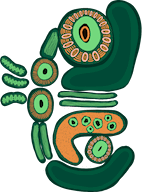
Wisdom teeth – where, why and why not?
Wisdom teeth is the common name for the third adult molar teeth. They’re generally the last teeth to erupt – at around 18-25 years of age. Wisdom teeth are situated at the very back of the mouth and although most people have four, it’s not uncommon for only one, two or three to appear.
The issue with wisdom teeth is that they are often impacted and don’t fully emerge through the gum into their correct position. This is generally caused by a lack of space in the jaw, so wisdom teeth may only partially erupt and be sitting at an angle, putting pressure on the tooth in front and nearby bone.
Impacted wisdom teeth
Impacted wisdom teeth can cause a range of problems, most commonly pain but also infection, ulcers and cysts to form. Another common problem is for food to become caught in the tight spaces under the flap of gum if the tooth has not fully erupted. Trapped food increases the risk of decay and can cause bad breath and an unpleasant taste in the mouth. Bacteria which has built up can also lead to inflammation and a continual low-grade infection.
When wisdom teeth are impacted, or there is a risk of complications developing, removal (extraction) is often recommended.
Removing wisdom teeth
Wisdom teeth can be removed by a general dentist or a dental specialist e.g., an oral surgeon or maxillofacial surgeon. Removal can also be done in a dental surgery or in a hospital, depending on how complex the removal is likely to be. Most upper wisdom teeth can be removed easily under a local anaesthetic. However, lower wisdom teeth are more likely to be impacted and more difficult to remove. Most commonly, when wisdom teeth are removed in a surgery, local anaesthetic is used. When removal is likely to be more complex and a general anaesthetic is needed, this is done in hospital.
What happens when a wisdom tooth is removed?
Once the anaesthetic is working, the gum is cut around the tooth to uncover it. Special instruments are used to remove the tooth from the surrounding bone. If necessary, the tooth may be divided into portions so it’s more easily extracted.
What happens after a wisdom tooth is removed?
Complications are not common, though some swelling and discomfort is normal for a few days afterwards. Like any other surgery, there is a risk of bleeding, infection and nerve damage. Careful attention to oral hygiene with mouthwashes helps to reduce the risk of infection. Antibiotics are often prescribed before and after wisdom teeth are removed.
How would I know if I have a problem with my wisdom teeth?
Be guided by your dentist who will examine your mouth and may order an x-ray. You may need an OPG X-ray, which will display all your upper and lower teeth on one single film. If your wisdom teeth have not yet erupted, or are only partially visible, an x-ray will help to see their position, the shape of the roots and where the tooth is positioned in relation to other important facial structures and nerves. However, every person is unique and wisdom teeth don’t always cause problems. If wisdom teeth are coming through in the right position and only causing slight tenderness, over-the-counter analgesia is often helpful. If they are, removing impacted wisdom teeth is the most common solution. Book an appointment with your dentist today to have your teeth checked.
References
https://www.dentalhealth.org/wisdom-teeth
https://www.nationaldentalcare.com.au/article/how-do-i-know-if-i-need-my-wisdom-teeth-removed
https://www.nationaldentalcare.com.au/treatments/wisdom-teeth-removal
https://www.teeth.org.au/wisdom-teeth
